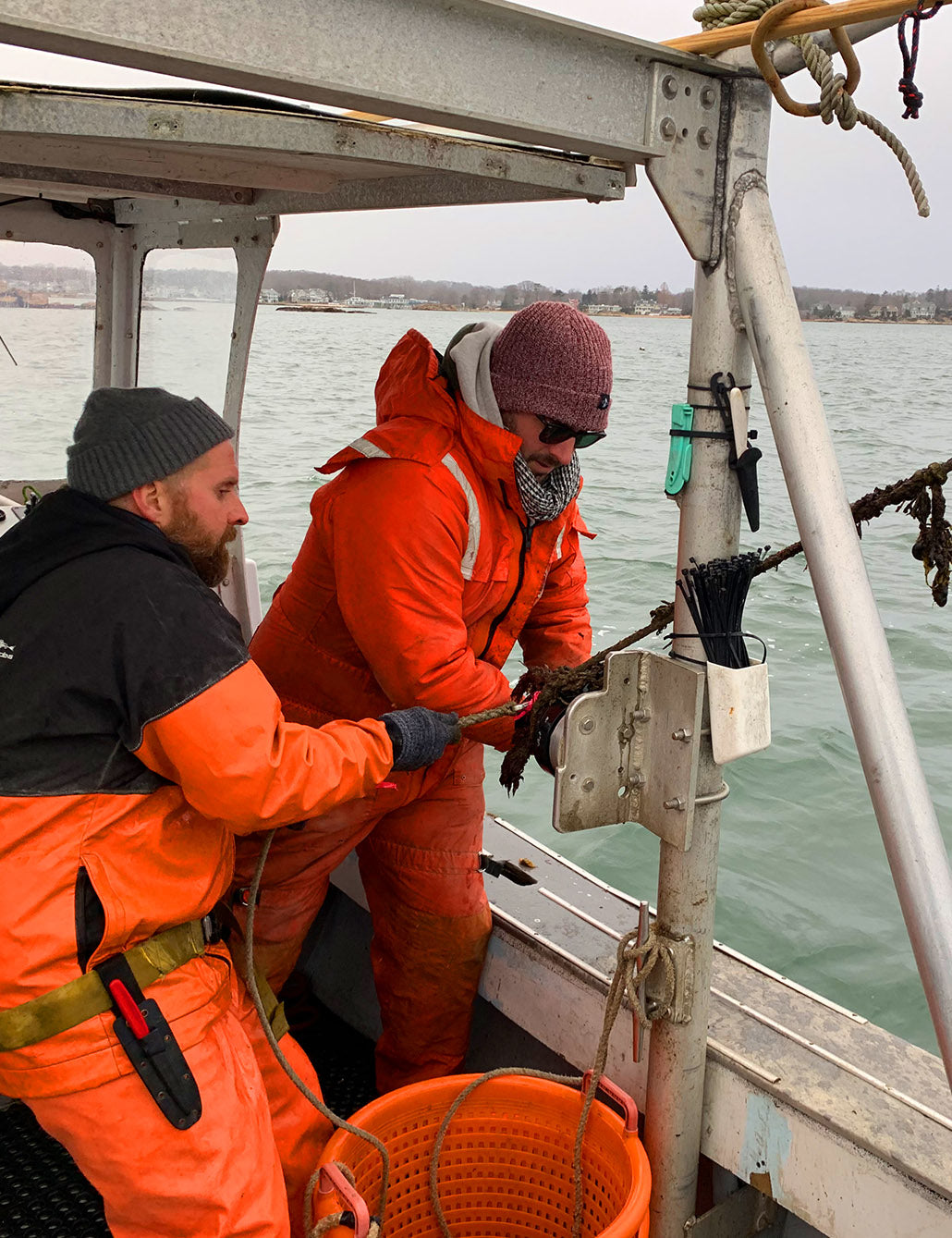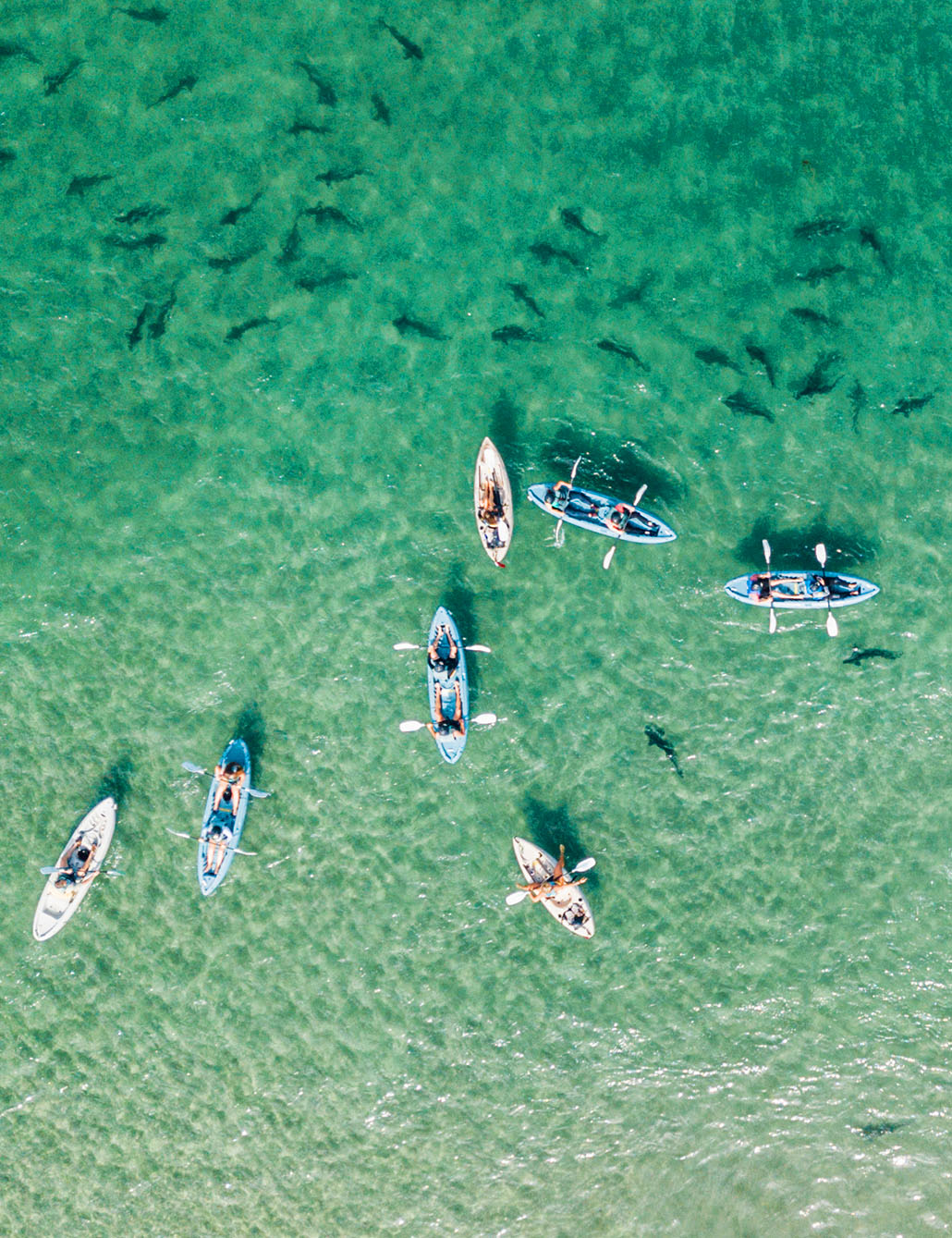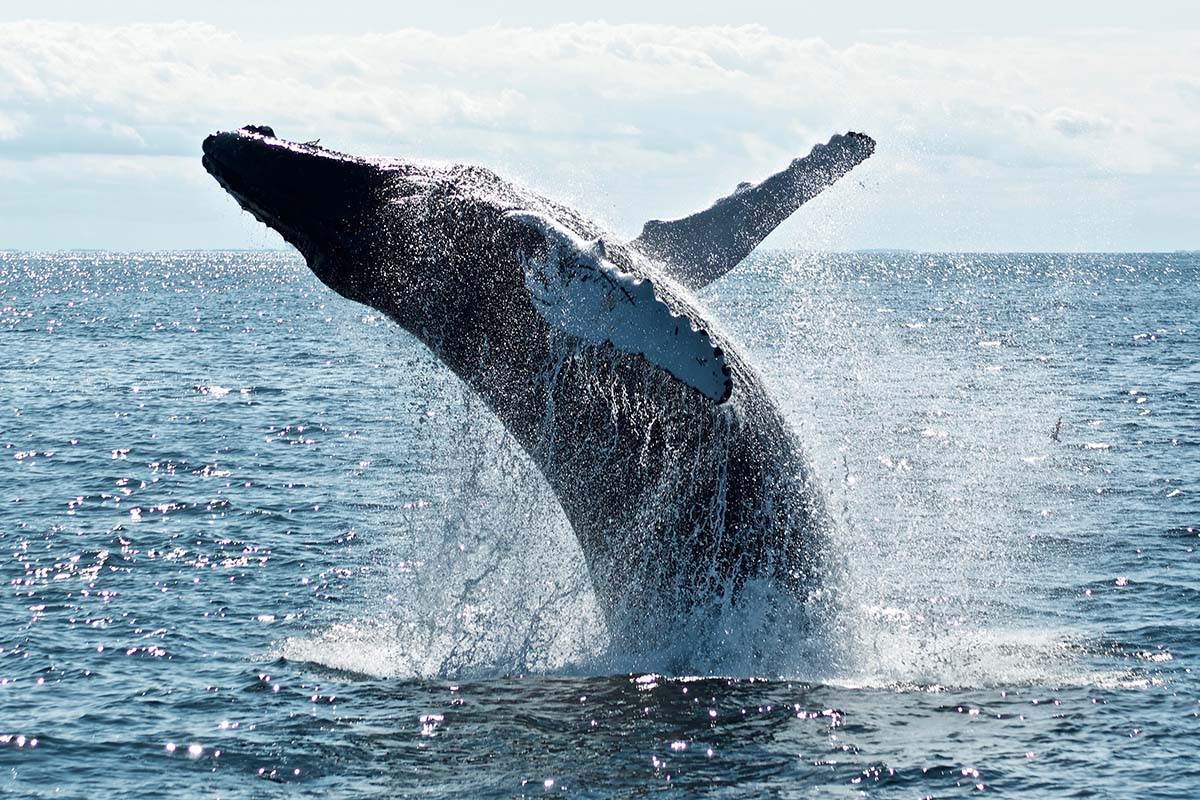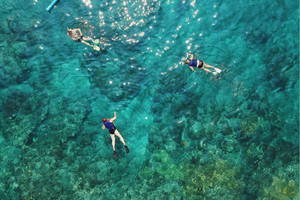Grey whales begin their yearly migration from the coast of Alaska in October and pass through the gorgeous beaches of La Jolla, San Diego, from the end of November to the beginning of March. Join us for an opportunity to get up and personal with some of the most gorgeous beasts on the earth!
California Gray Whales
Gray whales spend most of the year in the chilly seas of Alaska, but in the fall, they go on what is regarded as the longest migration of any mammal. After swimming for a month and a half, they arrive at Mexico's coastal lagoons to mate and give birth to their young. Gray whales arrive in Southern California in the winter and may be viewed everywhere on the West Coast, especially from sites extending into the ocean. But if you've come this far, you've undoubtedly decided that the greatest (and most environmentally friendly) way to see the migration is up close and personal in a kayak.
Gray whales are noted for their curiosity toward boats in some areas and are the focus of whale watching and ecotourism along North America's west coast. Gray whales have one of the largest yearly migrations of any mammal, going up to 14,000 miles round-trip in certain circumstances.

Their Reputation
Gray whales have long been thought to be a very vicious species. They were known to attack whaling boats viciously, flipping them, breaking them to pieces, and drowning the men, earning them the moniker "Devil Fish."
However, since the end of whaling, their connection with humans has changed dramatically. Gray whales are now thought to be among the kindest aquatic creatures.
They regularly approach whale-watching boats (particularly in San Diego) for a closer look. And sometimes allow people to touch them, but NOAA guidelines say you should never touch a gray whale, even if it approaches you. Gray whales, like most humans, turn out to be fantastic animals to be around unless you damage them. Crazy, huh?

Kayaking Whale Watching Tours
This adventure is popular; many individuals have reported seeing whales on La Jolla kayak trips. Kayaking is an excellent opportunity to get up and personal with the whales, and there is no better way to witness the migration.
From the seat of a kayak, see the grey whale migration! Gray whales naturally migrate via San Diego during the winter, leaving the Arctic seas and traveling south to the lagoons of Mexico. This is a non-polluting, non-threatening, and personal approach to encountering one of the world's most beautiful beasts.
Your guides will bring the party approximately two miles from shore, stopping at the finest places to see gray whales. You'll discover intriguing facts and history about whales, other marine species, and the La Jolla Ecological Reserve along the way. Remember that gray whales are wild creatures. We see a lot of them during the season, but we can't promise a sighting because we also encounter dolphins, sea lions, harbor seals, and other marine species!

Where to Search For Whale Sightings
Torrey Pines State Reserve
The State Reserve, located on the cliffs above Torrey Pines State Beach, has 1,750 miles of hiking paths, Torrey Pine trees, and indigenous animals. Its stunning coastal nature and simple, family-friendly roads and hiking trails make La Jolla a great site to observe whales or dolphins.
The Beach Trail (3.4 miles) or the Razor Point Trail (1.4 miles) are your best bets for some action. As the name says, much of the Shore Trail follows the beach. Razor Point is a longer loop that allows you to spend more time on the route while being close to the ocean. Much of the trail also provides views of the area's famous craggy cliffs.
Western Overlook at Cabrillo National Monument
Gray whales have been known to pass close by the western overlooks of Cabrillo National Monument – the park's Whale Overlook and Old Point Loma Lighthouse provide the greatest views of the San Diego coastline. Bring binoculars if you have them: they will make your life a lot simpler! During whale season, a limited quantity of binoculars is offered at the Visitor Center if you don't have any. Simply inquire at the information desk.
Fortunately, you can observe the whales at any time since they swim 24 hours a day.

What to Look For
The Blow or Spout
When the warm, moist air evacuated from the whales' lungs collides with the chilly air at the ocean's surface, it produces a blow or spout. A gray whale's blow may reach up to 15 feet in height, and each blow lasts roughly five seconds. Expect the whale to dive for three to six minutes, then surface for three to five blows in a sequence, 30 to 50 seconds apart, before plunging deep for another three to six minutes.
The Flukes (Tail)
A gray whale's 12-foot-wide fan-shaped flukes or tail are frequently displayed before a deep dive. The weight of the whale's tail above its body assists it in diving deep, so you'll see it surface just before they plunge under. A whale's fluke has no bones and is solely connected to the torso and tail muscles via banks of tendons.
Knuckled Back and Footprint
The back of a gray whale can be seen during and after the blow if the lighting is correct and the whale is close enough. It has a knuckled ridge along the spine and is often glossy and black or gray. After the whale has submerged, you may notice an extended, smooth oval of calm water where the whale has been, known as a footprint.
Breach and Splash
Gray whales will periodically leap out of the water and crash back in with a huge splash. This is known as breaching. Scientists aren't sure why they do this, but it's fascinating to watch. Other whales in the neighborhood may follow the action, so keep a look out!
Keep Them in Your Sight
Remember that they are traveling south, so if you discover one, it will most likely emerge again to the south. After observing a single gray whale for a long, you will be able to predict its particular pattern of breaths and dives, as well as where it will surface next.








